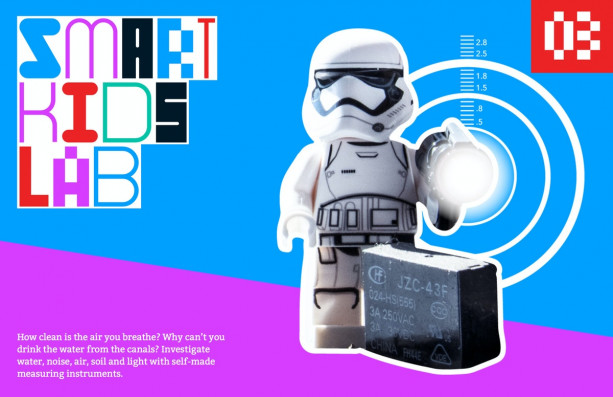Stay in the know on all smart updates of your favorite topics.
Intelligent Transportation System – Best Option for Smart Cities

Growing population, aging infrastructure, lack of mobility-related resources, and inefficient transport networks are leading to higher traffic congestion, road safety, and supply of mobility services in urban areas. It has become important for cities to look for smart mobility solutions to tackle these problems. Intelligent Transportation System is one such innovative concept that enables reliable and more personalized travel experience to move around in cities. Let’s have a look at the concept in detail.
What is an Intelligent Transportation System?
Intelligent Transportation System (ITS) strives to innovate, plan, operate, evaluate, and manage transportation systems by leveraging advanced information and communication technologies. ITS refers to the use of technology to collect and analyze information related to the sector to deliver integrated transportation solutions.
It focuses on various modes of transportation, infrastructure, vehicles, traffic management, stakeholders, and smart mobility. From a holistic point of view, it rectifies errors related to transportation, infrastructure and enables systematic management of the entire transport system by leveraging a wide range of technology. It is one of the important components of many innovative transportation solutions like Mobility as a Service, Connected, and automated mobility.
Moreover, effective use of infrastructure, capacity, technology in ITS requires a lot of planning well in advance by ITS specialists. That can be implemented by collaboration or public-private partnerships. Because there are so many things that need to be taken into consideration while implementing ITS, e.g., transport modes, design, routing, vehicles, technology type, and traffic flows, to make transportation safe and well-coordinated.
What is the need For ITS?
Transport authorities continue to raise the bar for safe and hassle-free transportation for commuters, but there are other challenges that commuters face related to urban congestion, inadequate road infrastructure, aging infrastructure, road safety, inefficient public transportation, and higher energy consumption. ITS can play an important role in solving these problems and better manage and control the transportation systems in real-time.
ITS facilitates new opportunities and more transportation choices integrated with easy-to-use technology. It is a multi-disciplinary concept that presents much-needed and cost-effective transportation solutions for smart cities. ITS can:
- Use resources and infrastructure effectively (existing as well as new)
- Plan, design, and implement comprehensive transportation systems
- Offers multi-modal, adequate, and on-demand transportation options
- Enhance public transportation management and its attractiveness
- Combat urban congestion
- Improve road safety and security
- Reduce fuel and energy consumption levels
- Control and manage traffic in the cities
- Make transport safe, efficient, manageable, and sustainable
Observatory of ideas

Solidary, Creative Economy, for Communities and With Communities!
Thousands of other initiatives around the world!
(Ana Luíza Farage Silva)
At some point people realized that they needed each other to do something other than "subsist". From there, they decided to organize themselves in something called communities in order to improve their lives and practice a good "survival". Over time, they realized that the law of the strongest could hurt and decided to affirm social contracts to live together and in harmony.
Some people understood that they should give up some freedoms for this, others did not. Over time, these communities have been forming their stories, generating their identities and dynamizing their cultures. When communities became organized, they started to be called societies.
How many societies do we know? How many societies do we live in? Within these social contracts, many have little and few have a lot. Much what? Wealth? Yes, few have access! Access to quality education, decent health, respectful housing, nutritious food and so on.
How many can do what they want and how many cannot do what they need? It is in this concern that I perceive (as several others have already noted) that everything tends to come together. The better structured places attract bigger investments that generate bigger chains that attract even more investments and keep developing (or just growing) more and more. The point is that where there is little, little remains.
Does it have to be this way? If you were a government official and were going to choose to develop a state, would you give growth incentives to regions that are already more advanced or encourage the development of those that still have almost nothing? The prudent answer may be: "it depends" ... if you just want to develop faster, it may be easier to encourage the growth of the wealthiest regions.
After all, their chain is greater and they can “pull” other cities in the process of growth. But if you think about it on the other hand, you can see that there is no certainty that the poorest cities will be fostered by the richest. Will the access ever get there? With this in mind, several concepts and practices have been developed. Have you ever heard of Creative Economy? Basically, knowledge, creativity and intellectual capital are the production factors of this economy.
In this process, cultural production is used as a historical factor in the formation of identity and income generation in that community. In other words, a new look at the solution of the structural problems of society, the economy and culture are sought from the identity of that population.
In other words, development is sought from the convergence and respect for the roots of that people's history with cultural, social and economic objectives. Discussions, initiatives and studies have been taking place throughout Brazil with the aim of expanding this concept: the first International Forum of Creative Cities in Rio Quente took place in September 2013 http://rioquente.go.gov.br/cidades-criativas/, the IV Minas Gerais Meeting of Public Administration, Solidarity Economy and Social Management (IV EMAPEGS) addressed this theme in Viçosa this year http://www.emapegs.ufv.br/ and so on.
In addition, another concept has been addressed, created and practiced. Have you heard of Solidarity Economy? The concept of solidarity started to be guided at the end of the 18th century, but it has not yet been completely assimilated to the market. In this context, solidarity economy means interdependence and is based on the principles of cooperation, self-management and brings an economic dimension to society. In other words, we think of a market geared towards people, not people geared towards the market.
Despite the various difficulties faced by the Solidarity Economy, such as mapping, production flow, obtaining credit, advice and collective work, many advances and initiatives have taken place in Brazil. Have you heard of the Center for Solidarity Economy of Tocantis? UFT's NESOL? They have been working hard on this process: http://www.fapto.uft.edu.br/conhecimento/index.php/uft/14-nucleo-de-economia-solidaria-da-uft-nesol. Many communities have also realized that they live on the job, but remain in poverty. So they decided to challenge all the pre-established and create social currencies. That is, they realized that they had to develop some way to encourage the money to circulate more within the community itself, with the possibility of exchanging it for the real. Some initiatives have been implemented in Brazil. The first was Banco Palmas, at the Palmeiras complex in Fortaleza (CE). http://www.bancopalmas.org.br/oktiva.net/1235/nota/12291. Today there are more than 110 community banks, a chain, across Brazil. Several other initiatives in the world have been taken, but it is clear that challenges abound.
52 weken duurzaam, we gaan het gewoon doen.
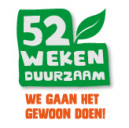
52wekenduurzaam nodigt je uit om je eigen leven stap voor stap duurzamer te maken. Een jaar lang iedere week een kleine verrassende en duurzame stap. Om te zien of het bij je past. Word je er gelukkig van, dan hou je het vol. Zo niet, dan skip je het. Wij onderzoeken wat er wel kan. Uitdagend, leuk, leerzaam en gratis. Loop je een stukje met ons mee?
Wij denken dat we met elkaar op een gemakkelijke manier veel duurzamer kunnen worden. Door elkaar te inspireren en uit te dagen. Door leuke en verrassende dingen te onderzoeken. Om zo je eigen versie van een duurzame leefstijl te ontwikkelen. We streven naar 5000 deelnemers in 2021. Hoe meer mensen meedoen, hoe beter. Voor onze Totale Impact Score, maar ook voor jezelf, want samen is veel leuker dan alleen. Dus geweldig als je nu al je gezin, je buren, vrienden en collega’s inspireert om ook mee te doen.
Wicked Problems
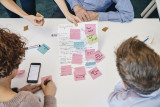
Te wicked? Niet voor ons.
Wij werken allemaal aan urgente, complexe, maatschappelijke uitdagingen. Issues die schier onoplosbaar lijken, van dilemma’s en paradoxen omgeven, nog niet duidelijk hoe het moet. Wel is duidelijk dát het moet, dat we elkaar nodig
hebben en dat we er NU aan moeten beginnen. Om met de woorden van Jan Rotmans te spreken; we leven niet in een tijdperk van verandering maar in een verandering van tijdperk. En hier hoort een nieuwe gereedschapskist bij.
En of je nou aan energietransitie werkt, andere mobiliteitssystemen, creëren van waterstofhubs, peer to peer autodeelsystemen, het maakt niet uit, we zien dat al deze opgaven op enig moment tegen gelijksoortige barrières aanlopen. Op samenwerking, financiering, privacy, onvoldoende aansluiting op de maatschappij, om maar een paar voorbeelden te noemen.
Unieke samenwerking
Als Amsterdam Smart City netwerk willen en kunnen we deze opgaven niet laten liggen. Door het bundelen van onze kennis en expertise kunnen we als netwerk iets unieks bieden en de wil en durf tonen om deze barrières te doorbreken. De betrokken partners die dit uitdenken en begeleiden zijn RHDHV, Kennisland, Drift, NEMO, Arcadis, Alliander, HvA en Metabolic. Zij bundelen hun expertise en ervaring om de echte vragen boven tafel te krijgen, tot nieuwe manieren van samenwerken te komen en barrières te doorbreken. We richten ons met name op de start van de samenwerking. Gezamenlijk ontwikkelen we een ‘wicked problem aanpak’. Op een nieuwe manier, lerend door te doen, exploratief.
Waar moet je aan denken?
Wat is eigenlijk het echte probleem? Wiens probleem is dit? Hoe kijken anderen er tegenaan? Welke andere partijen lijken nodig? Hoe vind je ze? Hoe ga je om met eigenaarschap en botsende frames? Hoe zorg je dat je al in
een vroeg stadium de maatschappij (bewoners, ondernemers, werknemers, etc) betrekt en hun ervaringen in het project trekt? Het wicked problem team zet nieuwe methoden in voor het beantwoorden van deze vragen. En het creëren van de benodigde commitment om het vraagstuk aan te pakken. Niets staat van te voren vast, want we passen ons aan aan wat we tegenkomen. Met elkaar ontwikkelen we een nieuwe aanpak om de barrières te doorbreken.
EC-Link Platform

You would like to connect with Urban Environmental Sustainability practitioners and researchers in China and exchange your approaches to green transport, clean energy, compact urban development, water and solid waste management, green buildings and municipal finance? Then sign up to the EC-Link platform! The platform links Eco Cities across Europe and China, offering inspiring examples from both sides of Eurasia and enabling direct contacts to the innovators. With the help of an integrated translation tool, posts can be translated into Chinese and English with just one click. Use of the platform is free of charge: http://eclink.org/bbs/#/?lang=en
A description of how the platform works can be downloaded here: http://eclink.org/ec_platform/upload/document/EC-Link_Users'%20Guide-EN.pdf
Hollandse Luchten

Via diverse pilots, burgermetingen en evenementen brengen we de leefomgeving van Noord-Holland in kaart en zetten we deze gezamenlijk om in actie. Door data samen te verzamelen, zullen we ook samen op zoek gaan naar oplossingen. Deze aanpak noemen we citizen sensing. Hollandse Luchten maakt gebruik van experimentele technologie en onderzoekt de waarde van nieuwe sensortechnologie voor inwoners van Noord-Holland.
Via diverse pilots, burgermetingen en evenementen brengen we de leefomgeving van Noord-Holland in kaart en zetten we deze gezamenlijk om in actie. Door data samen te verzamelen, zullen we ook samen op zoek gaan naar oplossingen. Deze aanpak noemen we citizen sensing. Hollandse Luchten maakt gebruik van experimentele technologie en onderzoekt de waarde van nieuwe sensortechnologie voor inwoners van Noord-Holland.
Pilots
De belangrijke doelstelling van de pilot opzet van Hollandse Luchten is het betrekken van burgers rondom data verzameling om zo op basis van nieuwe inzichten een leefbare en duurzame samenleving mogelijk te maken. Door open innovatiemethoden in te zetten in combinatie met het gebruik van betaalbare open hardware en nieuwe digitale mogelijkheden, worden burgers betrokken en ontwikkelen ze handelingsperspectief in het aanpakken van belangrijke maatschappelijke uitdagingen. Hollandse Luchten maakt hierbij gebruik van experimentele technologie en onderzoekt de waarde van nieuwe sensortechnologie voor inwoners van Noord-Holland.
Partners
In dit project onderzoeken we in opdracht van Provincie Noord-Holland hoe door middel van open source en betaalbare meetsensoren, burgers meer inzicht kunnen krijgen op de luchtkwaliteit in gebieden waar de leefkwaliteit onder druk staat. Hier werken meerdere partners aan mee o.a.: RIVM, Omgevingsdienst IJmond, Omgevingsdienst Noordzeekanaal, TATA Steel, Smart City Haarlem, Gemeente Zaanstad, Gemeente Haarlem, Buiksloterham Circulair, Brak! IJmuiden en Waag.
Citizen Sensing
Citizen sensing is een nieuwe manier om de leefomgeving in kaart te brengen. Een belangrijk onderdeel van deze leefomgeving is de luchtkwaliteit. Traditioneel gezien wordt luchtkwaliteit gemeten door officiële meetstations van partijen zoals het Rijksinstituut voor Volksgezondheid en Milieu (RIVM) en de GGD. Deze meetstations geven nauwkeurige maar plaatsgebonden data. Luchtkwaliteit kan echter sterk verschillen per locatie en tijdstip. Omdat er relatief weinig meetstations zijn wordt de luchtkwaliteit op veel locaties of geschat via berekeningen en voorspellingen of niet gemeten waar dat wel belangrijk is. Hoe is de luchtkwaliteit van een basisschool of voetbalclub naast een drukke verkeersweg, bijvoorbeeld, of voor mensen die in de buurt van een fabriek wonen?
Citizen sensing probeert dit gat op te vullen met burgermetingen van luchtkwaliteit. Met goedkope en toegankelijke open-source sensoren kan de luchtkwaliteit door heel het land in kaart gebracht worden. Op deze manier kan citizen sensing lokale problematiek aankaarten en biedt het data om verandering teweeg te brengen. Met data kan bijvoorbeeld een nieuw gesprek op gang gebracht worden dat gebaseerd is op een beter inzicht van de situatie. Ook kunnen oplossingen beter worden afgestemd op de werkelijke lokale situatie. Het RIVM onderzoekt dit van hun platform Samen Meten aan Luchtkwaliteit. In de volgende video leggen ze uit waarom dit belangrijk is.
Waag en Citizen Sensing
Voor Waag is Hollandse Luchten een belangrijk project binnen haar onderzoek naar burgergedreven dataverzameling over de kwaliteit van leefomgeving. Waag deed hier eerder in Europees verband onderzoek naar onder de noemer Making Sense. In samenwerking met o.a. Barcelona, Pristina (Kosovo) en Amsterdam werd in negen pilots gekeken naar dit soort onderzoek. Over dit project verscheen de documentaire: Citizen Science Revolution.
Urban Nature Amsterdam

#UrbanNatureAmsterdam, de eerste papieren groene en blauwe kaart van de stad.
Amsterdam is veel meer dan een verzameling straten, gebouwen, cultuur en economische activiteit. Het doel van deze stadskaart is om te laten zien dat we leven temidden van parken, (binnen)tuinen, plantsoenen, natuurspeeltuinen, groene daken, meren, grachten, rivieren, polders en bossen. Een uniek groen en blauw stadslandschap dat we ongemerkt delen met meer dan 10.000 soorten flora en fauna.
Nature4Cities

Nature4Cities is a H2020 EU-funded project, creating a comprehensive reference Platform for Nature Based Solutions (NBS), offering technical solutions, methods and tools to empower urban planning decision making. This will help addressing the contemporary environmental, social and economic challenges that face European Cities.
We will bring Nature back into innovation, planning and their implementation. This new governance implies new collaborative models driven by citizens, researchers, policy makers, and industry leaders, utilizing co-creation processes and sharing of Best Practice. Thus, the goal for implementation Projects is a positive balance between economic, environmental and societal benefits and costs.
Crowdsensing Rembrandtpark
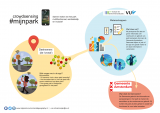
Urban green is good for your health. Urban green is good for social cohesion and Amsterdam’s city parks are being used more and more intensively. It is the City of Amsterdam’s responsibility to ensure that the parks remain attractive for everyone, but how? The Institute for Environmental Studies (IVM) at the VU is working together with the Gemeente Amsterdam on an app that collects information about how people perceive and use urban green spaces. A pilot is being conducted in the Rembrandtpark to see how such information can inform park renovations.
An example of the first results may look like this:
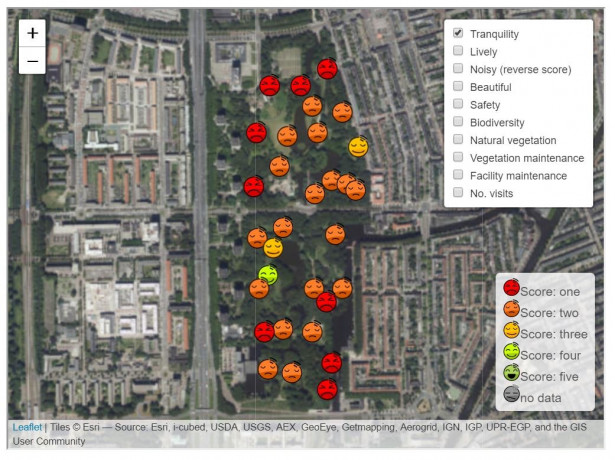
Are you visiting the Rembrandtpark? Go to http://mijnpark.environmentalgeography.nl/ to join!
Smart Stories
Check the article about MijnPark featured in our online magazine 'Smart Stories':
ClairCity: Citizen-led air pollution reduction in cities
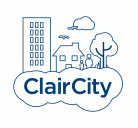
ClairCity is an innovative project involving thousands of people in cities across Europe, enabling us all to decide the best local options for a future with clean air and lower carbon emissions. ClairCity is funded by the European Union.
ClairCity is a four year project (2016-2020)
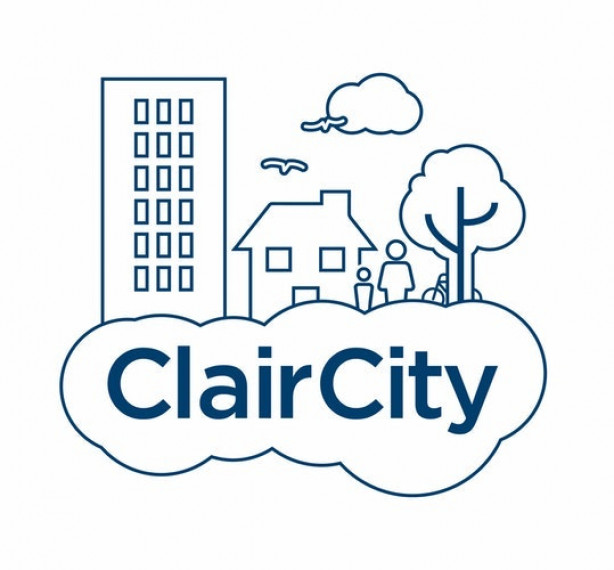
SensorTeam: Indoor school air quality

How Does Indoor Air Quality Impact Children's Health and School Performance?
The classroom is often overlooked when it comes to indoor air quality. Problems with heating, ventilation and air conditioning systems, known as HVAC systems can trigger a host of health problems and reduce school performance. SensorTeam is developing a smart IoT device and cloud tool that helps analyse the air in schools and shows how the indoor environment influences children's health and performance.
SensorTeam’s IoT indoor climate sensor, currently placed in a classroom on a primairy school in Amsterdam West, autonomously sends temperature, humidity, CO2 , light and motion measurement data to a cloud dashboard (internet), which provides real-time insights to teachers, parents and school management.
Data is sent using LoRa wireless network technology provided by KPN en Simpoint. This means that SensorTeam’s sensors do not need any existing network infrastructure or power.
The example below shows SensorTeam's cloud dashboard.
For further information please contact us.
Gertjan de Vries
SensorTeam B.V.
<a>gertjan@sensorteam.io</a>
Smart Kids Lab
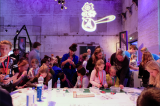
The Smart Kids Lab makes it possible for children to map their environment in a playful way, by using modern technology and instruments.
Want to experience the Smart Kids Lab yourself?
You can! Waag will be present at the Marineterrein Ontdekdagen on the 9th of September and everyone can join the measurements! We collect all the measurements of the day on one big map. Then it is possible to see what are the best spots to swim, play or read a book!
More info: waag.org/nl/event/ontdekdagen-marineterrein
Smart Stories
Check the article about the Smart Kids Lab featured in our online magazine 'Smart Stories':
Park om de Hoek
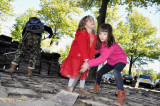
De Gezonde Stad is a foundation that connects inhabitants, companies and local government within Amsterdam to create a more sustainable and healthy city. De Gezonde Stad initiated Park om de Hoek.

Stay up to date
Get notified about new updates, opportunities or events that match your interests.

